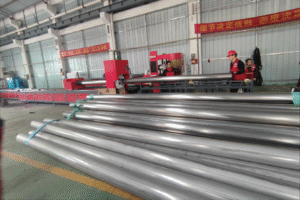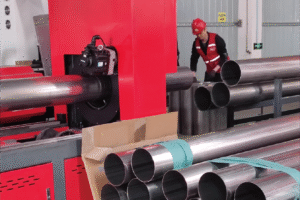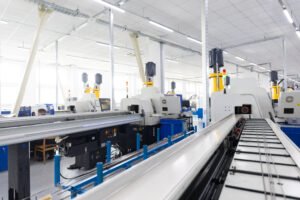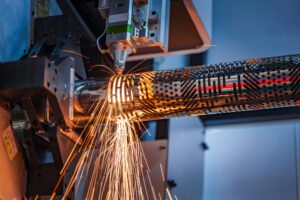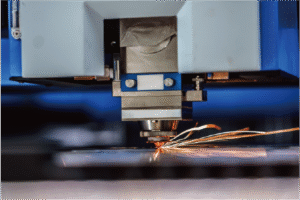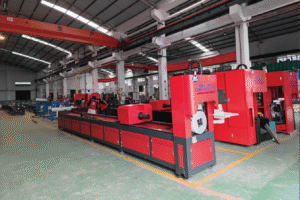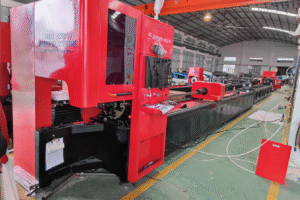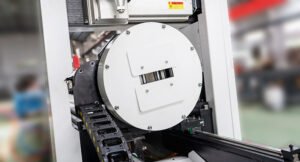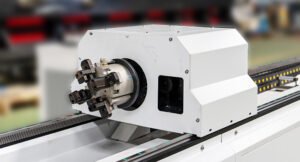What Are the Safety Considerations When Operating a Metal Tube Cutting Machine?
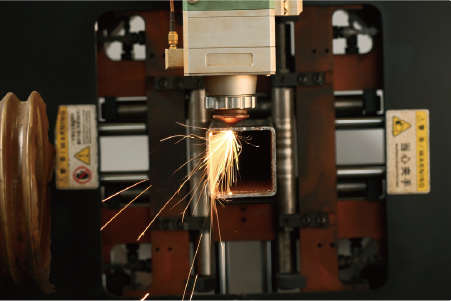
As someone deeply involved in metal fabrication, I’ve seen firsthand how crucial safety is. Operating a metal tube cutting machine carries inherent risks, but neglecting safety measures can turn minor incidents into severe accidents, jeopardizing both personnel and productivity.
Operating a metal tube cutting machine safely involves a multi-faceted approach, including essential personal protective equipment (PPE), meticulous work area preparation, strict adherence to operational protocols, and proper malfunction handling, all contributing to a secure working environment and efficient production.
Ensuring a safe working environment goes beyond mere compliance; it's about fostering a culture of vigilance that protects your team and preserves your valuable assets. From my perspective at MZBNL, we believe that robust safety protocols are the bedrock of efficient, uninterrupted production, which is something our clients, like Ahmed from the UAE, deeply value.
In my 25 years in this industry, I've learned that safety isn't just a checklist; it’s an ongoing commitment to continuous improvement, deeply intertwined with technological innovation. For instance, when we engineered MZBNL's No-CAD Operating System1, our goal was not only to dramatically improve ease of use and shorten setup time but also to inherently reduce the potential for human error—a significant safety enhancement. Traditional systems often lead to complex, error-prone manual interventions that increase risk. By simplifying the process to parameter entry for standard tube types, we've minimized the skill threshold, allowing operators to become proficient in one day rather than fifteen, which in turn reduces the likelihood of mistakes stemming from inexperience or fatigue. Ahmed, who struggles with high operator turnover and retraining burdens, would find this particularly beneficial, as it directly addresses a key pain point in maintaining a consistently safe and skilled workforce. Moreover, critical thinking around safety involves understanding how machine design can complement human diligence, creating safer, more productive environments.
What personal protective equipment is essential for safe operation?
When working with powerful machinery like a metal tube cutting machine, personal protective equipment (PPE) isn't optional; it's your frontline defense. Overlooking proper PPE can lead to serious injuries, transforming a productive day into a regrettable incident.
Essential personal protective equipment for metal tube cutting machine operators includes safety glasses, hearing protection, gloves, steel-toed boots, and flame-resistant clothing, providing critical defense against hazards like sparks, noise, flying debris, and sharp edges, ensuring operator safety.
While our advanced MZBNL machines, with innovations like zero-waste tail material and front-feeding, significantly enhance efficiency and inherently reduce some risks, the human element remains vital. PPE acts as a crucial barrier against the residual hazards that even the most sophisticated automation cannot entirely eliminate. Ensuring every team member, from new hires to seasoned veterans, understands and consistently uses the correct PPE is paramount, creating a safety culture that protects against unforeseen circumstances and supports continuous, high-performance operations, much like Ahmed's pursuit of automated solutions for his growing architectural metalwork and vehicle parts business.
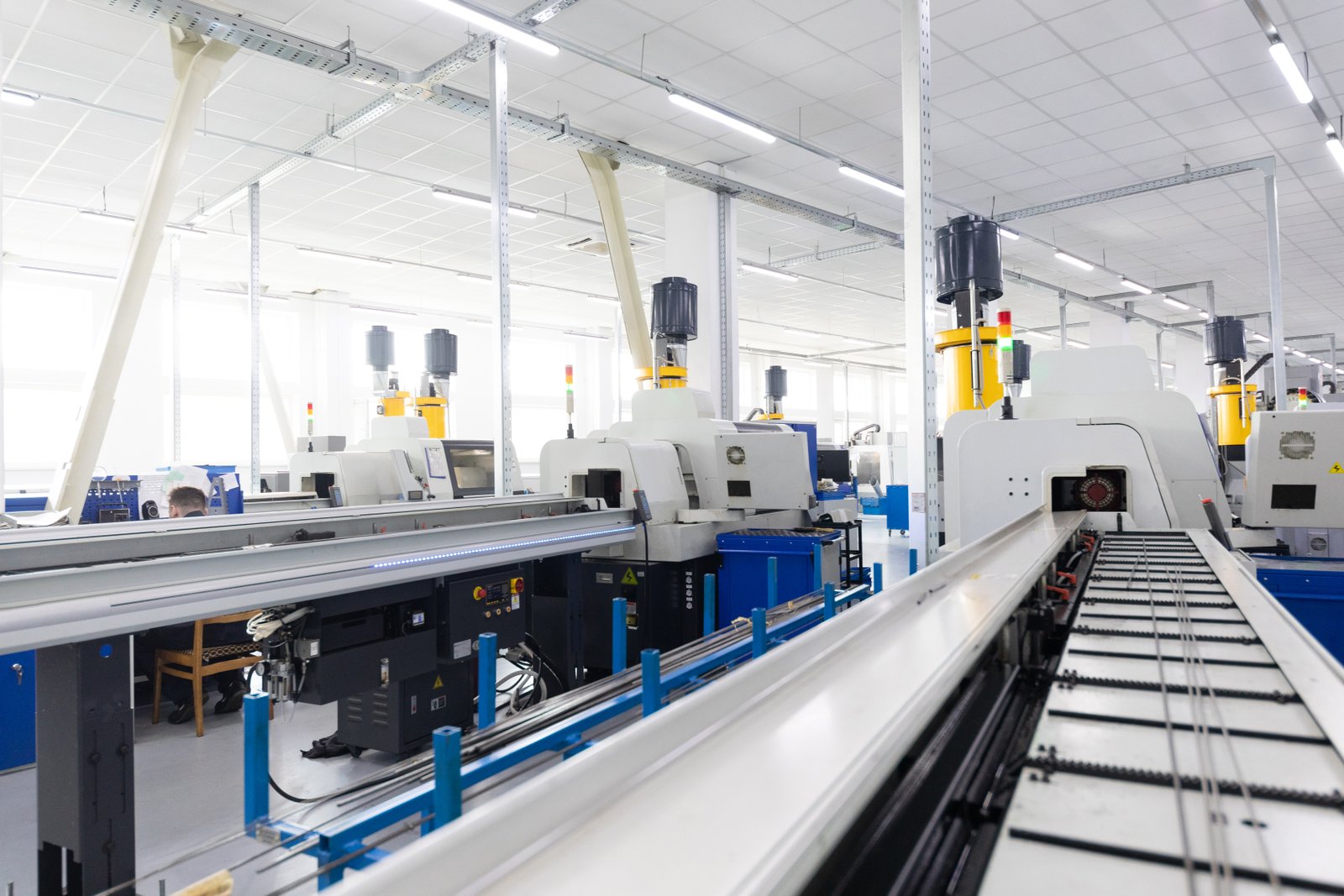
Core PPE Components and Their Role in Hazard Mitigation
The foundation of safe operation begins with a comprehensive understanding and consistent use of personal protective equipment. Each piece of PPE serves a specific function, shielding operators from the diverse hazards present in a metal tube cutting environment. For instance, high-velocity molten metal splatter from laser cutting, sharp edges from freshly cut tubes, and intense laser radiation all demand specific protective measures. Safety glasses, particularly those rated to protect against laser wavelengths (e.g., OD 6+ for typical fiber laser wavelengths), are non-negotiable for eye protection against debris and harmful light. Similarly, heavy-duty gloves, often made of leather or Kevlar, protect hands from sharp edges and heat, while steel-toed boots safeguard feet from falling materials. This multi-layered approach ensures that operators are protected from the head down, minimizing the risk of severe injury. Adherence to these fundamental requirements is the first step towards a robust safety protocol, safeguarding the most critical asset: your personnel.
Beyond the basics, specialized clothing, such as flame-resistant or welding jackets, provides crucial protection against sparks and heat generated during the cutting process. In my experience visiting factories, I've observed that companies that invest in high-quality, comfortable PPE often see better compliance rates among their staff. This directly translates into fewer accidents and greater productivity. For businesses like Ahmed’s, which handles large volumes of metal parts for construction and automotive sectors, the sheer volume of operations means even a small lapse in PPE compliance can have significant consequences. Therefore, implementing a robust PPE program, backed by regular inspections and training, is not merely a regulatory requirement but a strategic investment in operational continuity and employee well-being. Ensuring that PPE is readily available, properly fitted, and regularly inspected for wear and tear is as important as the initial selection.
The collective impact of proper PPE cannot be overstated. According to the Occupational Safety and Health Administration (OSHA), proper PPE use can reduce the risk of eye injuries by 90% and foot injuries by 80%. When combined with engineering controls inherent in advanced machines like MZBNL’s, which feature enclosed cutting areas and automated material handling, the overall safety profile of the operation dramatically improves. For example, our front-feeding innovation reduces operator interaction with moving parts, inherently lowering the risk of pinch points, but PPE still remains critical for tasks like machine setup or material inspection. This symbiotic relationship between advanced machinery and diligent PPE usage forms the cornerstone of a truly safe and efficient metal fabrication workflow.
Understanding Specific Hazards and Corresponding PPE Standards
Effective PPE selection hinges on a thorough understanding of the specific hazards present in the metal tube cutting environment. Each hazard category, from mechanical to thermal and optical, requires a tailored protective response. Mechanical hazards, such as flying debris, pinch points, and sharp edges, necessitate impact-resistant safety glasses (meeting ANSI Z87.1 standards), cut-resistant gloves (e.g., EN 388 rated), and steel-toed boots (ASTM F2413). Thermal hazards, primarily from sparks and molten metal, demand flame-resistant clothing and, at times, specialized face shields. Optical hazards, especially from laser systems, require specific laser safety glasses rated for the exact wavelength and power of the laser being used, ensuring adequate optical density. It’s not enough to just wear "safety glasses"; they must be the right safety glasses for laser cutting.
Furthermore, noise pollution is a significant, often overlooked hazard. Operating large industrial machines can generate decibel levels far exceeding safe limits, leading to long-term hearing damage. Therefore, hearing protection, such as earplugs or earmuffs with appropriate Noise Reduction Ratings (NRR), is mandatory. The cumulative effect of these hazards on an operator’s health over years of exposure can be debilitating, impacting not only their quality of life but also their ability to perform their job effectively. Businesses need to conduct thorough risk assessments to identify all potential hazards and then map them to the appropriate PPE, ensuring comprehensive coverage. This proactive approach not only protects employees but also minimizes the risk of costly worker's compensation claims and regulatory fines, directly impacting a company's bottom line and reputation.
To illustrate the importance of matching PPE to specific risks, consider the following comparison of glove materials and their protective properties:
| Glove Material | Primary Protection | Common Use Cases | Limitations |
|---|---|---|---|
| Leather | Abrasion, Heat | Material Handling, Welding | Limited Cut/Puncture Resistance |
| Nitrile | Chemical, Oil | Maintenance, Light Assembly | Poor Cut/Heat Resistance |
| Kevlar | Cut, Abrasion | Sharp Edge Handling | Limited Puncture/Heat Resistance |
| Dyneema | High Cut | Blade Handling, Sheet Metal | Lower Heat Resistance |
| Cotton | Dirt, Light Abrasion | General Purpose, Liner | No Significant Hazard Protection |
This table underscores that a one-size-fits-all approach to PPE is ineffective. For a fabrication business like Ahmed’s, which handles various metal types and thicknesses, having a range of gloves appropriate for different tasks—from loading raw tubes to handling finished parts—is critical. My team at MZBNL always advises clients on the best safety practices, emphasizing that understanding these nuances is key to truly protecting personnel.
Integrating PPE into a Holistic Safety Culture
Beyond simply providing PPE, its effective integration into an overall safety culture is paramount. This involves consistent training, regular maintenance, and fostering an environment where safety is everyone’s responsibility. Regular safety training sessions are essential, not only for new hires but also as refreshers for experienced operators, covering proper PPE usage, maintenance, and emergency procedures. This is particularly relevant for clients like Ahmed, whose business constantly seeks to automate and upgrade production efficiency; as new machinery or processes are introduced, retraining on associated safety protocols becomes critical. My experience suggests that hands-on training, where operators practice donning and doffing PPE correctly and identifying potential hazards, is far more effective than passive presentations.
Moreover, a robust PPE program includes diligent inspection and replacement protocols. Worn-out or damaged PPE offers inadequate protection and can itself become a hazard. Establishing clear guidelines for when PPE should be replaced and ensuring easy access to new supplies encourages compliance. Consider a scenario where an operator’s safety glasses are scratched, impairing vision; if replacement is difficult, they might forgo them, increasing risk. Proactive maintenance and a culture of immediate reporting of damaged PPE are vital. This commitment to detail, from the machinery itself to the safety gear used, reflects the overall professionalism and reliability of an operation.
Finally, leadership must champion safety from the top down. When management actively participates in safety drills, enforces PPE rules, and celebrates safety milestones, it reinforces the message that safety is a core value, not just a regulatory burden. This fosters an environment where operators feel empowered to speak up about unsafe conditions or practices without fear of reprisal. For a company like MZBNL, our focus on user-friendly designs, like the No-CAD system that reduces operational complexity, aligns perfectly with this safety-first philosophy. It minimizes the chances of human error born from complex interfaces, complementing the essential role of PPE in creating a truly safe and efficient metal tube cutting environment.
PPE reduces eye injuries by 90%True
OSHA data confirms proper PPE use dramatically decreases eye injury risks in metal fabrication.
Cotton gloves protect against heatFalse
The hazard table shows cotton gloves offer no significant heat protection - leather or Kevlar are required.
How should the work area be prepared before beginning operations?
A safe and efficient work area is the foundation for successful metal tube cutting operations. Overlooking proper preparation can lead to hazards like tripping, material mishandling, and equipment damage, transforming a routine task into a risky endeavor.
Before operating a metal tube cutting machine, the work area must be thoroughly prepared by clearing debris, ensuring adequate lighting and ventilation, checking emergency stops, securing raw materials, and verifying machine calibration, all crucial for a safe and efficient production environment.
Just as a chef meticulously preps their ingredients before cooking, an operator must ensure their workspace is ready before cutting. This meticulous preparation is not merely about tidiness; it's a critical safety protocol that prevents accidents, optimizes workflow, and directly impacts productivity. At MZBNL, we understand that a well-organized and secure work area complements the high-speed and precision capabilities2 of our machines, ensuring that the entire operation runs smoothly and safely. For our client Ahmed, who values turnkey solutions and efficiency, a well-prepared work area means less downtime and more consistent output for his architectural metalwork and vehicle parts contracts. It's a testament to planning that pays dividends in both safety and performance.
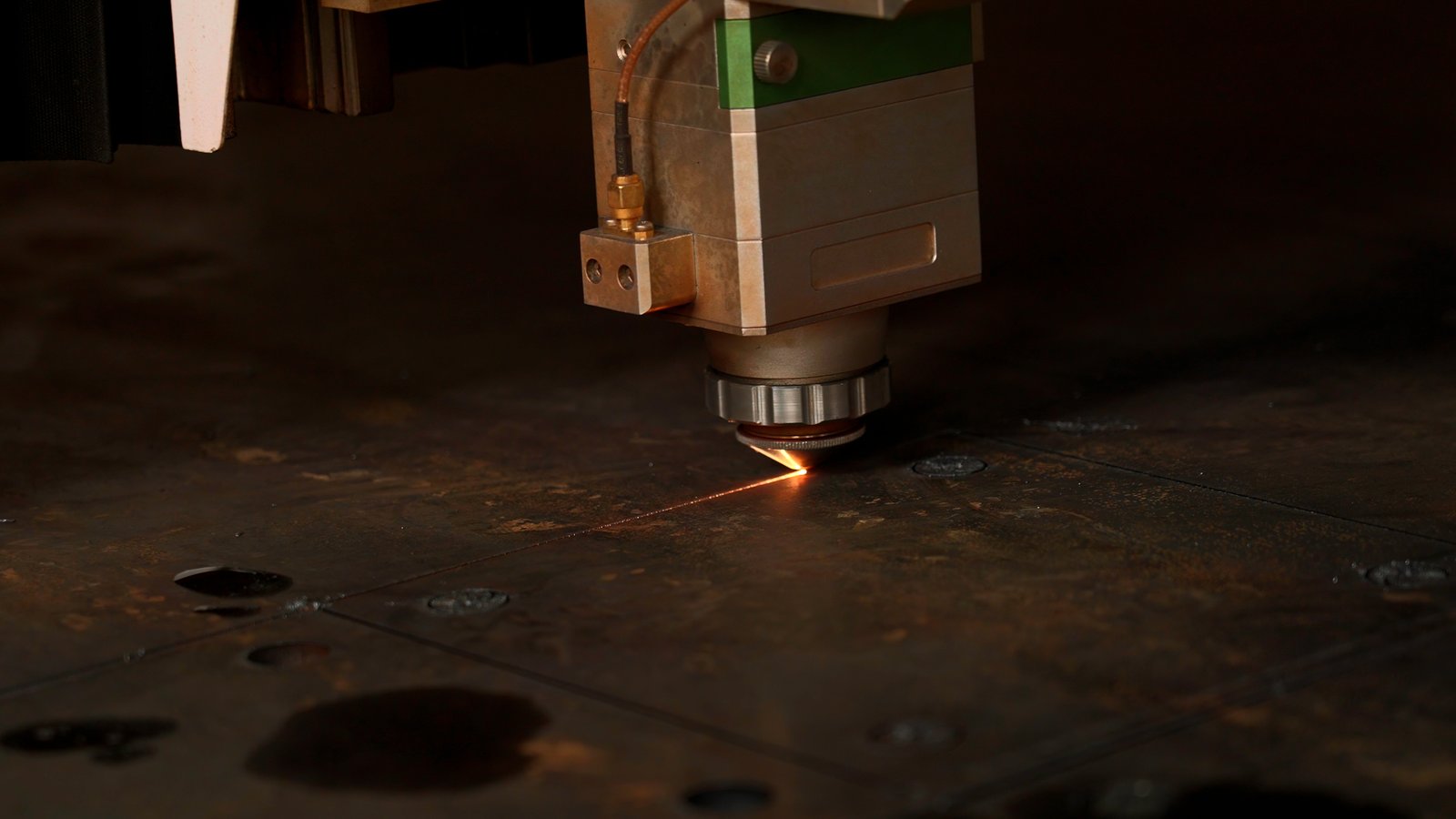
Maintaining a Clean and Organized Environment
The cleanliness and organization of the work area are paramount for safety and efficiency in any metal fabrication facility. Debris, scrap metal, oil spills, and general clutter are significant tripping hazards and can interfere with material handling and machine operation. Implementing the 5S methodology3 (Sort, Set in Order, Shine, Standardize, Sustain) can transform a chaotic workspace into a lean, safe, and productive one. Sorting involves removing unnecessary items; setting in order means arranging essential tools and materials logically; shining is regular cleaning; standardizing creates consistent practices; and sustaining ensures these practices become routine. A clean floor free of obstructions allows for unobstructed movement of operators and materials, reducing the risk of falls and collisions.
Consider the flow of materials: raw tubes arriving, finished parts exiting. If pathways are blocked or materials are haphazardly stored, operators are forced to navigate obstacles, increasing the risk of accidents. An organized work area ensures clear access to emergency exits, fire extinguishers, and emergency stops. I've personally seen how a cluttered environment slows down production, as operators waste time searching for tools or maneuvering around obstacles, leading to frustration and increased potential for errors. This focus on meticulous organization directly contributes to safer and more streamlined operations, aligning with the "easy to operate and maintain" feature of MZBNL's machines.
Furthermore, a clean environment also reduces machine wear and tear. Dust, metal shavings, and oil residue can infiltrate machine components, leading to premature failure and costly downtime. Regular cleaning schedules, especially around the machine's moving parts and laser optics, are essential for maintaining precision and prolonging equipment life. For a company like Ahmed’s, which relies on consistent uptime for contract-based fabrication services, minimizing these preventable issues through diligent work area management is a direct contributor to profitability and project delivery. Implementing clear demarcation for work zones, material storage, and waste collection further enhances safety and efficiency by eliminating ambiguity and promoting systematic workflow.
Ensuring Adequate Machine and Environmental Conditions
Beyond cleanliness, the physical environment surrounding the metal tube cutting machine must meet specific safety standards. Adequate lighting is crucial for operators to clearly see the cutting process, machine controls, and potential hazards. Poor lighting can lead to eye strain, fatigue, and an increased likelihood of errors. Similarly, proper ventilation and fume extraction systems are non-negotiable, especially when dealing with laser cutting, which generates fumes and particulate matter that can be harmful if inhaled. These systems must effectively capture and filter airborne contaminants, protecting operator health and preventing buildup in the facility. In some cases, specialized air filtration systems are required to manage specific metal fumes, such as those from galvanized steel or stainless steel.
Crucially, all emergency stop buttons must be clearly visible, easily accessible, and regularly tested to ensure full functionality. These buttons are the last line of defense in an emergency, allowing for immediate machine shutdown. My team at MZBNL always emphasizes the importance of these checks during installation and training. The machine itself also requires pre-operation checks: verifying that all safety guards and interlocks are in place and operational, inspecting cables and hoses for damage, and ensuring proper air pressure and coolant levels. Even minor discrepancies can escalate into major safety hazards or machine malfunctions during operation.
Finally, temperature and humidity control in the workspace can impact both machine performance and operator comfort. Extreme temperatures can affect electronic components or cause operator fatigue, leading to reduced vigilance. Maintaining stable environmental conditions contributes to the longevity of the machine and the well-being of the workforce. For MZBNL, our machines are designed for high-speed and high-precision cutting in diverse environments, but basic environmental controls ensure optimal performance and safety. Ahmed, operating in the UAE, would certainly appreciate the importance of these considerations for the longevity and reliability of his equipment, particularly given the regional climate challenges.
Material Handling and Storage Safety
The safe handling and storage of raw materials and finished products are critical components of work area preparation, especially with heavy and often long metal tubes. Improper storage can lead to materials falling, creating crushing hazards, or obstructing pathways. Raw tubes should be stored on sturdy racks, ensuring they are stable and cannot roll or shift unexpectedly. The design of these storage solutions should consider the weight and length of the tubes, providing adequate support and easy, safe access for loading onto the machine. This is where MZBNL's front-feeding innovation4 truly shines, as it streamlines the loading process, making it safer and more efficient.
Traditionally, material loading often involved awkward manual maneuvering or complex crane operations, which increased the risk of strains, drops, or collisions. Our front-feeding mechanism automatically pulls the tube in from the front, simplifying the process and significantly reducing operator labor intensity by approximately 40%. This not only boosts feeding efficiency but also inherently removes many manual handling risks. For Ahmed’s business, where efficiency and worker ergonomics are key, this innovation means fewer opportunities for injury during material setup and a smoother workflow from stock to machine.
Furthermore, finished parts, particularly those with sharp edges or complex geometries, must be handled with appropriate care and stored in designated areas to prevent injury or damage. Clear labeling of materials, both raw and finished, helps prevent misidentification, which can lead to incorrect processing or unsafe handling. Training operators on safe lifting techniques and the proper use of material handling equipment, such as forklifts or overhead cranes, is also vital. A well-organized material flow system, from inbound raw material to outbound finished product, ensures that the workspace remains uncluttered and operations proceed without hazardous interruptions, directly supporting the "cost-effective customized solutions" MZBNL provides.
5S methodology improves workspace safetyTrue
The 5S system (Sort, Set in Order, Shine, Standardize, Sustain) systematically eliminates hazards and improves efficiency in metal fabrication workspaces.
Emergency stops need monthly testingFalse
Emergency stop buttons should be tested regularly, but the text doesn't specify monthly intervals - frequency depends on usage and manufacturer recommendations.
What safety procedures should be followed during machine operation?
Once the work area is prepped and PPE is on, the next critical layer of safety lies in the operational procedures themselves. Deviating from established protocols during machine operation is a common cause of accidents, risking both equipment damage and severe personal injury.
During metal tube cutting machine operation, critical safety procedures include maintaining a safe distance, never overriding interlocks, consistent monitoring of the cutting process, immediate reporting of anomalies, and strict adherence to lockout/tagout protocols during maintenance or clearing jams.
Operational safety procedures are the rulebook that keeps everything running smoothly and safely. It's not just about knowing what to do, but consistently applying that knowledge in every cut, every shift. At MZBNL, we design our machines to be smart and digitalized, simplifying complex processes to reduce human error, but even the most advanced technology requires diligent human oversight. Our commitment to ease of operation, exemplified by the No-CAD system5, lessens the cognitive load on operators, allowing them to focus more keenly on safety protocols. For companies like Ahmed's, where continuous, high-volume production is key, unwavering adherence to these procedures ensures consistent output, minimizes costly downtime from accidents, and safeguards the well-being of a skilled workforce.
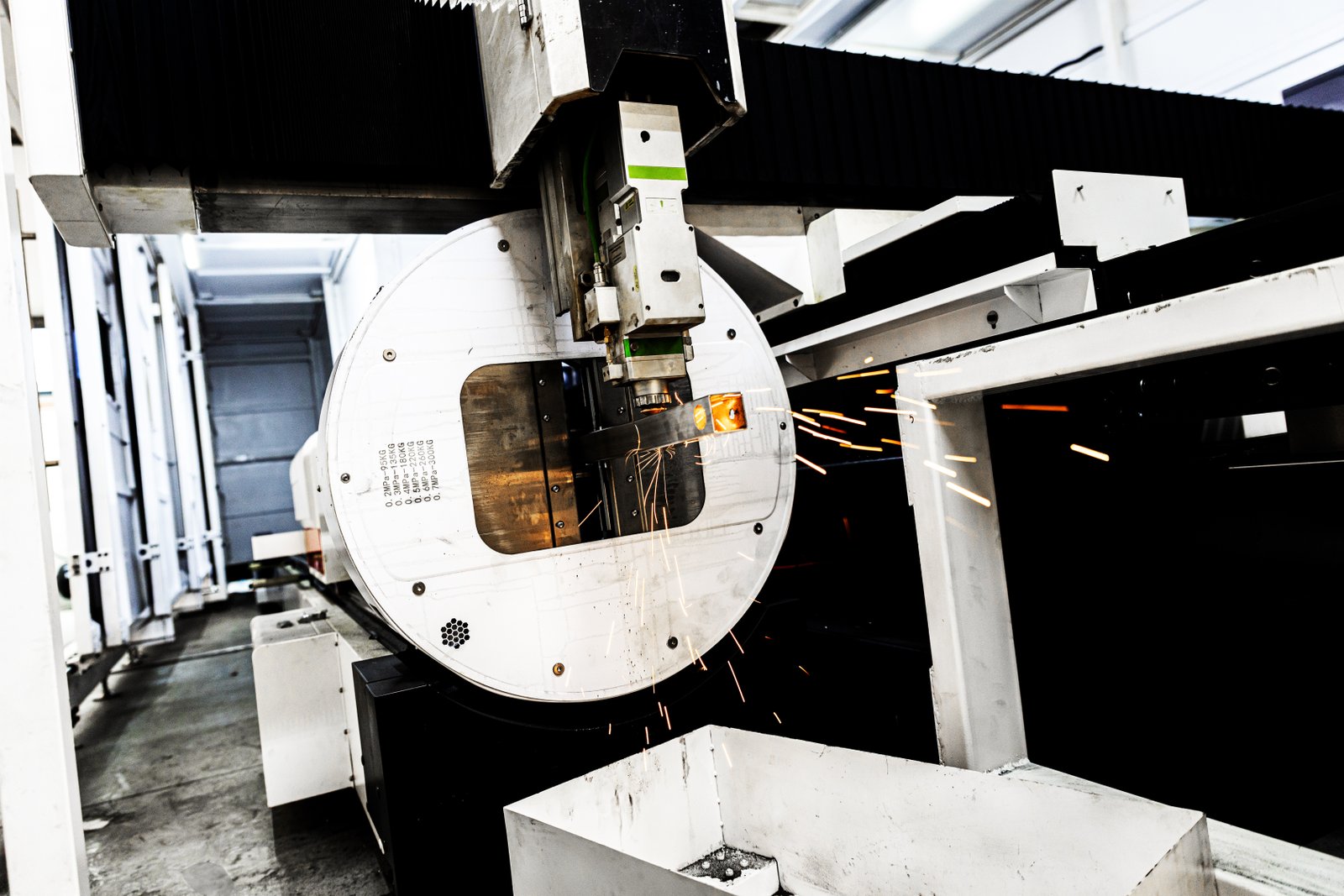
Adhering to Machine-Specific Protocols and Interlocks
Every metal tube cutting machine comes with a set of manufacturer-specific safety protocols and built-in interlocks designed to prevent accidents. These are not mere suggestions but critical safeguards. Interlocks, for example, are safety devices that prevent a machine from operating if a guard is open or if a component is not in its safe position. Attempting to bypass or override these interlocks is extremely dangerous and strictly prohibited, as it exposes operators to moving parts, high-power lasers, or other hazards. My experience in this industry has shown me that incidents often occur when operators, under pressure to meet deadlines, attempt to take shortcuts by disabling these safety features. This short-sighted approach invariably leads to severe consequences.
Furthermore, understanding and adhering to the specific operational sequences for your machine is vital. This includes proper material loading and clamping, which prevents tubes from shifting during cutting—a common cause of damage and dangerous projectile hazards. MZBNL's machines, with their smart and digitalized systems, guide operators through these steps, reducing the chance of error. Our No-CAD system, for instance, simplifies the input process, requiring only parameters rather than complex 3D drawings, which means less time spent on complicated setups and more focus on ensuring the physical setup is secure. This directly minimizes the risk of miscalculations or incorrect programming that could lead to dangerous machine movements or material misfeeds.
Regular training on these machine-specific safety features, including the location and function of all emergency stops, is paramount. Operators must know instinctively how to react in an emergency, where to hit the E-stop, and what to do next. This quick reaction can be the difference between a minor incident and a catastrophic failure or serious injury. We ensure comprehensive training is part of our service offering, reinforcing that ease of use extends to safe operation. For Ahmed, who values post-sales training and support, this commitment to operator proficiency in safety protocols provides immense value, reducing the learning curve and improving overall plant safety from day one.
Monitoring and Immediate Response During Operation
Constant vigilance during machine operation is a cornerstone of proactive safety. Operators should not simply press a button and walk away; they need to continuously monitor the cutting process for any anomalies. This includes observing the quality of the cut, listening for unusual noises from the machine, watching for excessive sparks or smoke, and checking for any material jams or misfeeds. Any deviation from normal operation should prompt an immediate response, usually by hitting the emergency stop button. This quick and decisive action can prevent further damage to the machine, save material, and, most importantly, protect the operator.
For example, a sudden increase in sparks during laser cutting might indicate an issue with the cutting parameters, gas pressure, or even a foreign object on the material. Ignoring such signs can lead to a fire, damage to the laser head, or an incomplete cut that then requires manual intervention in a hazardous zone. My team and I always stress the importance of an "eyes-on, ears-on" approach. Operators should be trained to recognize these warning signs and understand the potential implications. This level of attentiveness is enhanced by MZBNL's digitalized systems, which provide real-time feedback and diagnostic information, helping operators identify issues quickly.
Beyond simple observation, establishing clear protocols for reporting and responding to issues is vital. Who should be notified? What information should be gathered? A well-defined chain of command ensures that potential hazards are addressed promptly and effectively. This also fosters a culture of responsibility, where every operator understands their role in maintaining a safe environment. Ahmed's focus on automated solutions aims to streamline production, but even with automation, human oversight for anomaly detection remains indispensable. Timely intervention based on keen observation can prevent minor glitches from escalating into major safety concerns or costly breakdowns, ensuring consistent, high-precision output.
Preventing Common Operational Errors and Misjudgments
Many accidents during machine operation stem not from mechanical failure, but from human error—often due to distraction, fatigue, or misjudgment. Preventing these common operational errors requires a combination of robust training, a clear understanding of machine limitations, and a commitment to focused work. Distractions, whether from personal devices or other activities in the workspace, must be minimized. Operators need to be fully engaged with the task at hand, especially when dealing with high-power machinery. This mental presence is as crucial as physical safety measures.
A thorough understanding of the machine’s capabilities and limitations is also essential. Pushing the machine beyond its specified parameters, such as attempting to cut material that is too thick or of an unsuitable type, can lead to equipment damage, unexpected material reactions, or even machine instability. Our MZBNL machines are designed for high-speed and high-precision cutting within their specified ranges, and exceeding these limits can compromise both safety and cut quality. This awareness includes knowing the proper speeds and feeds for different materials and thicknesses to avoid dangerous vibrations or sudden material breakage.
Finally, ensuring proper material clamping and stability throughout the cutting process is paramount. Loose or improperly secured tubes can shift violently, becoming projectiles or causing the machine to jam or crash. Operators must double-check clamps and supports before initiating any cut, verifying that the material is firmly held. Regular breaks and adherence to shift schedules can mitigate fatigue, which is a major contributor to operational errors. For a large facility like Ahmed’s, with 100+ staff and continuous operations, managing operator fatigue and promoting a culture of sustained focus is critical to maintaining a high safety standard and preventing incidents, aligning with his preference for easy-to-operate systems that reduce operator strain.
Interlocks prevent unsafe operationTrue
Machine interlocks are critical safety features that prevent operation when guards are open or components are unsafe.
Operators can bypass safety for speedFalse
Bypassing safety features is strictly prohibited and leads to severe consequences, not increased productivity.
How can operators handle machine malfunctions safely?
In any manufacturing environment, machine malfunctions are an inevitable part of the operational lifecycle. However, how operators respond to these disruptions can be the difference between a minor hiccup and a significant safety incident or costly downtime.
Safely handling metal tube cutting machine malfunctions involves immediate power shutdown, following lockout/tagout procedures, notifying supervisors, and never attempting repairs beyond one's training, ensuring personal safety and preventing further machine damage and operational disruption.
While our MZBNL machines are built for reliability and equipped with smart, digitalized systems for easier troubleshooting, even the most robust equipment can experience unexpected issues. The ability to react calmly and systematically to a malfunction is a critical skill that protects both the operator and the machine itself. My experience has taught me that a well-trained response to malfunctions minimizes risks and accelerates the return to full production. For clients like Ahmed, who relies on uninterrupted operations for contract-based services, efficient and safe malfunction handling directly translates into preserving profit margins and maintaining client trust, highlighting the value of robust training and support from suppliers.
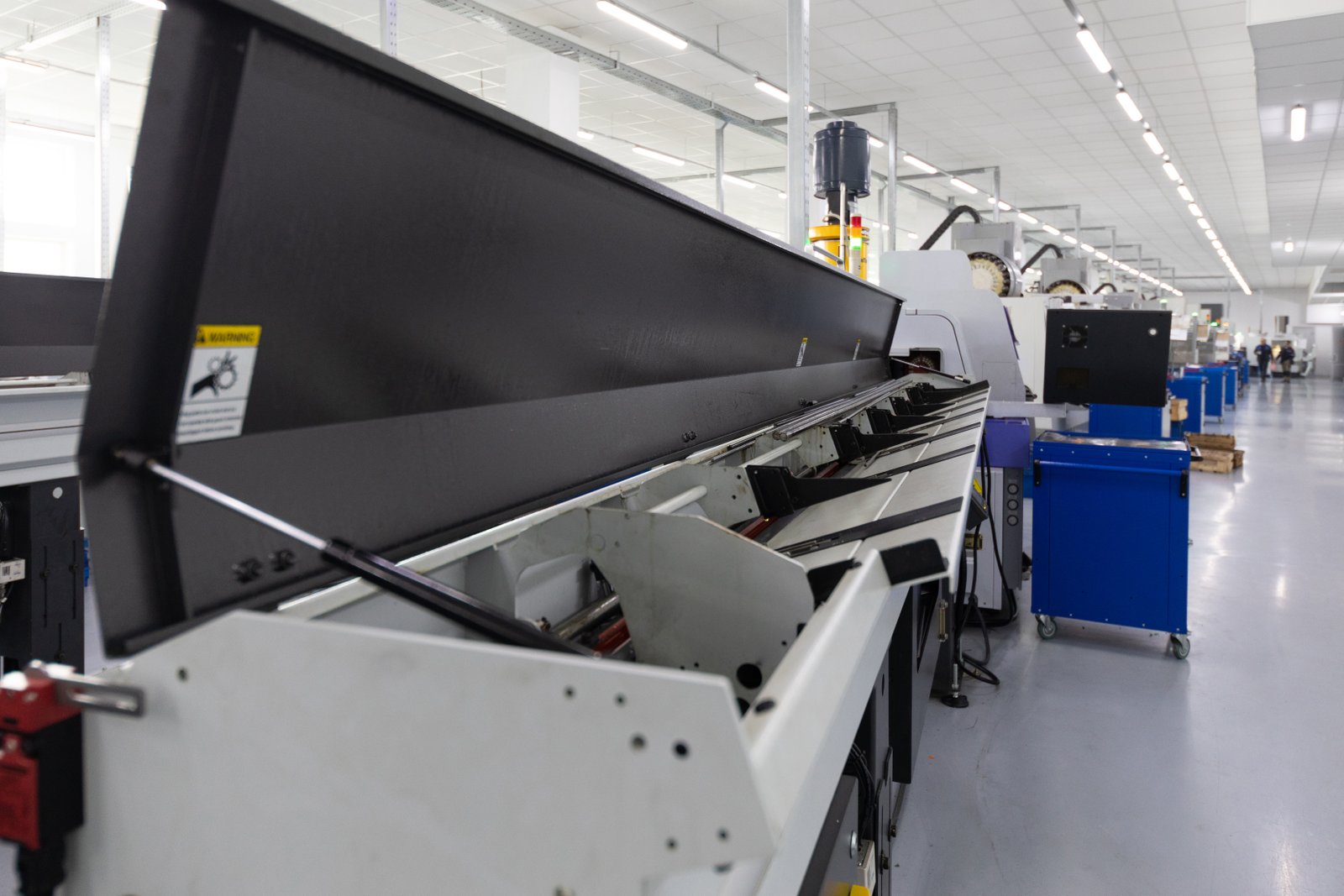
The Immediate Response: Emergency Stop and Lockout/Tagout
The absolute first step in responding to any machine malfunction, particularly one that presents an immediate hazard, is to activate the emergency stop (E-stop)6. This button is designed to immediately de-energize the machine, bringing all moving parts to a halt and shutting down the laser or other cutting mechanisms. Operators must be trained to locate and activate the E-stop instinctively, without hesitation. It's a critical safety feature that can prevent severe injuries or catastrophic machine damage. After hitting the E-stop, the next crucial step is to follow Lockout/Tagout (LOTO) procedures. This involves physically disconnecting the machine from its power source and tagging it to prevent accidental re-energization while maintenance or inspection is underway.
LOTO is arguably one of the most vital safety procedures in industrial settings. It ensures that machines cannot be inadvertently started while someone is working on them, preventing electrocution, crushing, or other hazards from unexpected machine movement. A properly implemented LOTO program requires specific training for all employees who work with or around machinery, ensuring they understand the energy sources, the isolation points, and the application of locks and tags. In my career, I've seen countless situations where strict adherence to LOTO prevented serious accidents during maintenance or troubleshooting. Conversely, neglecting LOTO has been a leading cause of fatalities and severe injuries in industrial environments globally.
The discipline required for LOTO cannot be overstated. Each energy source—electrical, hydraulic, pneumatic, even stored energy like springs—must be identified and rendered safe. For complex machines like MZBNL’s laser tube cutters, this might involve multiple energy isolation points. Proper documentation and communication are also essential: ensuring everyone involved knows the machine is locked out and why. For a large manufacturing facility like Ahmed’s, where multiple shifts and diverse personnel might interact with the same machinery, a robust and consistently enforced LOTO program is fundamental to maintaining a safe work environment and preventing tragic incidents. It’s a core component of any comprehensive safety strategy.
Troubleshooting and Reporting: Identifying the Issue
Once the machine is safely de-energized and locked out, the next phase involves troubleshooting the malfunction and reporting it to the appropriate personnel. Operators should be trained to observe and document as much detail as possible about the malfunction: what happened, when it happened, any error codes displayed, and what actions were taken (e.g., hitting E-stop). This information is invaluable for maintenance technicians to quickly diagnose the problem and implement a solution. Attempting to troubleshoot without proper training or tools can exacerbate the problem, cause further damage, or even endanger the operator.
Modern metal tube cutting machines, especially MZBNL's smart and digitalized systems, come equipped with advanced diagnostics and error reporting capabilities. These systems can often provide specific error codes or messages on the HMI (Human Machine Interface) that point directly to the source of the problem. This significantly reduces troubleshooting time and improves the accuracy of repairs. Our machines are designed for easy operation and maintenance, including providing clear diagnostic feedback to operators. For Ahmed, whose business values efficiency and seamless operation, this digitalized diagnostic capability means quicker problem identification and reduced downtime, as technicians can arrive prepared with the right tools and parts.
However, it's crucial for operators to understand their limitations. While they might be able to identify a basic error or clear a simple jam, complex mechanical or electrical issues should always be left to trained and certified maintenance technicians. Trying to force a solution or perform unauthorized repairs can lead to further damage to the sophisticated components of the machine, void warranties, and create new safety hazards. Establishing a clear communication protocol for reporting malfunctions—who to call, what information to provide, and how to follow up—ensures that issues are addressed by the right experts promptly and safely. This partnership between informed operators and skilled technicians is essential for maintaining machine health and operational safety.
Professional Intervention and Repair: When to Call for Expert Help
Knowing when to step back and call in professional technical support is a critical aspect of safe malfunction handling. For anything beyond basic, clearly defined operator-level troubleshooting (like clearing a simple material jam that doesn't involve complex parts or power sources), specialized technicians are required. These experts have the in-depth knowledge of electrical, mechanical, laser, and control systems, as well as the specialized tools needed to safely diagnose and repair complex machinery. Attempting a repair without this expertise not only risks personal injury but can also lead to more extensive and costly damage to the machine, potentially impacting its high-speed and high-precision capabilities.
For MZBNL, our commitment to "after-sales service and training support" is a key value proposition, especially for international clients like Ahmed. We offer comprehensive support, including remote diagnostics capabilities that allow our technicians to often identify problems without being on-site, minimizing response times. If an on-site visit is necessary, our global distributor networks and service teams ensure that expert help is available. Ahmed, who prioritizes suppliers with proven technology and global references, and values spare parts availability and remote diagnostics, understands that reliable post-sales support is just as important as the machine's initial performance. This ensures that even when malfunctions occur, they are resolved efficiently and safely, minimizing disruptions to his contract-based fabrication services.
Furthermore, many modern machines have sophisticated components, such as laser resonators, high-precision optics, and complex robotic arms, that require highly specialized calibration and repair. Unauthorized tampering with these components can not only degrade machine performance but also create serious safety hazards, especially with high-power lasers. Therefore, a strict policy of "only authorized personnel perform repairs" is essential. This policy protects the operator, ensures the machine's integrity, and maintains compliance with safety regulations and warranty terms. Investing in regular preventative maintenance contracts with the machine supplier can also significantly reduce the incidence of unexpected malfunctions, ensuring greater uptime and sustained operational safety.
E-stop is the first responseTrue
Activating the emergency stop immediately de-energizes the machine and halts all operations, preventing further hazards.
Operators should attempt complex repairsFalse
Complex repairs should only be performed by trained technicians to avoid safety risks and further machine damage.
What post-operation safety checks should be conducted?
The work isn't truly done once the cutting stops. Post-operation safety checks are just as crucial as pre-operation preparations, ensuring the machine and work area are left in a safe, clean state for the next shift or shutdown.
Post-operation safety checks for metal tube cutting machines include thorough cleaning of debris, inspecting the machine for wear or damage, properly storing tools and materials, and ensuring power is safely disconnected, preparing the area for the next shift or extended shutdown.
Think of post-operation checks as the essential "cool down" phase for your machinery and workspace. Neglecting these steps can lead to accumulated hazards, reduced machine longevity, and costly delays for subsequent operations. At MZBNL, we believe in a holistic approach to machine care that extends beyond just cutting; it's about maintaining peak performance and safety for every cycle. For Ahmed's business, which plans to automate existing workflows and seeks long-term stability, these checks are an investment in the consistent reliability and optimal performance of his valuable equipment, ensuring smooth transitions between shifts and prolonged machine life.
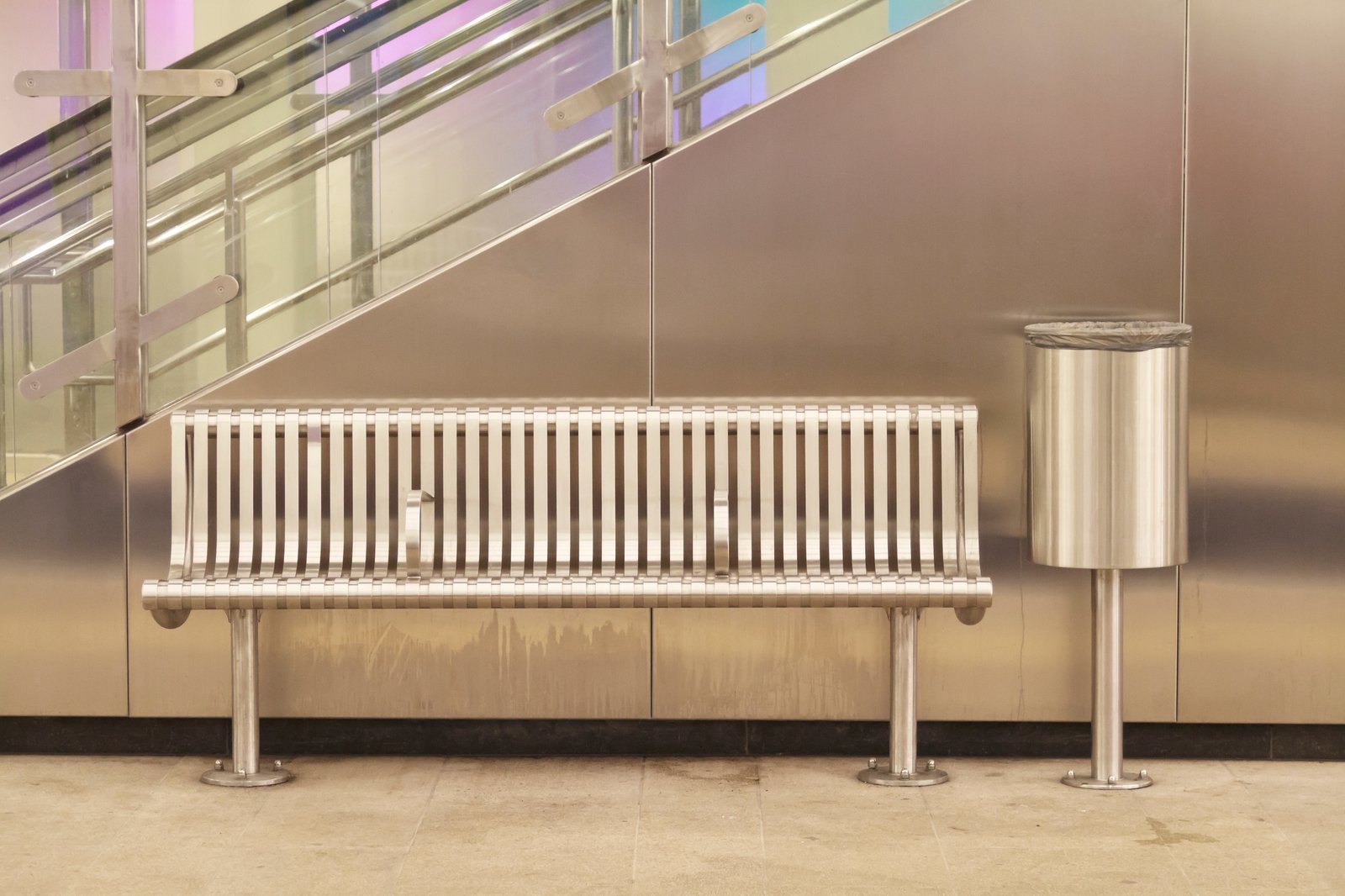
Cleaning and Debris Removal
The immediate aftermath of metal tube cutting can leave behind a significant amount of scrap metal, dust, and debris. Thorough cleaning of the machine and the surrounding work area is the first and most critical post-operation safety check. Metal shavings and offcuts, if left on the floor or within machine components, pose several hazards. They are tripping hazards, can cause cuts or punctures, and can also interfere with the smooth operation of moving parts like linear guides and gantry systems. More critically, fine metal dust7 and oil residue can be highly flammable, especially in the presence of sparks from subsequent operations or residual heat from the laser cutting process, creating a significant fire risk.
Implementing a consistent cleaning protocol at the end of each shift or workday is essential. This includes using industrial vacuum cleaners designed for metal dust (which prevent sparking), brushes, and rags to remove all debris from the machine bed, surrounding floor, and internal components where accessible and safe. For MZBNL's machines, our innovative zero-waste tail material design inherently reduces the amount of leftover scrap, but even with this efficiency, a certain amount of debris is unavoidable. This reduction in waste directly translates to less cleaning time and a safer environment by minimizing accumulated hazards. This continuous effort in cleanliness is a core aspect of maintaining peak operational safety and machine longevity.
Furthermore, designated waste containers should be readily available and regularly emptied. Segregating different types of scrap metal for recycling can also be part of this process, aligning with sustainable manufacturing practices. The critical point is that these cleaning tasks should never be rushed or overlooked. They are not merely about aesthetics but are fundamental safety measures that prevent future incidents and ensure the machine is ready for optimal performance during its next use. A clean machine is a happy machine, and a clean environment is a safe environment, benefiting both the equipment and the operators.
Machine Inspection and Maintenance Preparation
Following cleaning, a meticulous visual inspection of the metal tube cutting machine is vital. This proactive check allows operators to identify any signs of wear, damage, or potential issues that may have developed during operation. Key areas to inspect include the laser head nozzle and lens8 (for pitting or debris buildup), the condition of cutting slats, the chucks and clamps (for wear or misalignment), and all hoses and cables (for fraying or leaks). Any anomalies, no matter how minor they seem, should be immediately reported to supervisors or the maintenance team. Ignoring small issues can lead to larger, more expensive problems down the line, potentially causing sudden breakdowns and safety hazards.
This post-operation inspection is also an ideal time to prepare the machine for scheduled maintenance. For example, checking fluid levels (like coolant or lubrication) and topping them off if necessary, or documenting the need for specific parts replacement for the next maintenance window. This foresight contributes significantly to predictive maintenance strategies, minimizing unscheduled downtime. MZBNL's commitment to "easy to operate and maintain" extends to these routine checks, with design features that make inspection points accessible and clear. Our machines are built for durability and high output, but consistent, minor attention prevents major repairs.
For a business like Ahmed's, where production consistency is crucial for fulfilling architectural metalwork and vehicle parts contracts, these diligent inspections are invaluable. They reduce the likelihood of unexpected equipment failure, ensuring that the machine is always operating at its high-speed and high-precision capabilities. An operator's detailed report of a minor anomaly can allow the maintenance team to schedule a repair proactively, during off-hours or planned downtime, rather than reacting to a costly breakdown that halts production entirely. This methodical approach to post-operation checks is a cornerstone of operational excellence and long-term equipment reliability.
Secure Shutdown and Storage
The final step in post-operation safety checks involves safely shutting down the machine and securing the work area. This typically involves following a specific shutdown sequence outlined in the machine's manual, which might include powering down the laser system first, then the machine's main controls, and finally disconnecting the main power supply (if the machine is not in continuous operation). Properly shutting down ensures that the machine is in a stable and safe state, preventing accidental startup or power surges. For MZBNL’s "smart and digitalized systems," these shutdown sequences are often automated or guided through the interface, ensuring compliance.
Additionally, all tools should be cleaned and returned to their designated storage locations. Raw materials that were not consumed should be returned to their proper storage racks, and finished parts moved to the next processing stage or storage area. This prevents clutter, potential tripping hazards, and damage to materials. Leaving tools or materials haphazardly around the machine invites accidents and inefficiency for the next shift. It's about leaving the workspace in a condition that is ready for immediate, safe use by the next operator or for the start of the next shift.
Securing the machine itself might involve locking guards or engaging safety mechanisms if the machine will be left unattended for an extended period, such as overnight or over a weekend. This protects the machine from tampering and ensures that no unauthorized personnel can operate it. This comprehensive approach to post-operation safety—from cleaning and inspection to secure shutdown and organization—reflects a deep commitment to maintaining a safe, efficient, and well-managed production environment, which is exactly what MZBNL promotes through its focus on integrated R&D, manufacturing, sales, and service, ensuring our clients experience seamless, reliable, and safe operations.
Metal debris is a fire hazardTrue
Fine metal dust combined with oil residue can be highly flammable when exposed to sparks or heat.
Minor machine issues can be ignoredFalse
Small anomalies should always be reported as they may develop into major safety hazards or equipment failures.
Conclusion
Prioritizing safety in metal tube cutting machine operation, from essential PPE to meticulous work area preparation, adherence to operational procedures, safe malfunction handling, and diligent post-operation checks, is paramount. This comprehensive approach protects personnel, optimizes productivity, and ensures the longevity of your investment. It’s a commitment to excellence MZBNL proudly supports.
-
Learn how the No-CAD Operating System enhances safety and efficiency in cutting operations ↩
-
Discover benefits of high-speed performance in metal cutting machine operations ↩
-
Understand how 5S method improves workplace safety and efficiency ↩
-
Explore advantages of front-feeding systems in handling metal tubes safely ↩
-
Discover how No-CAD simplifies operations to reduce human error and improve safety. ↩
-
Understand the importance of emergency stop features in averting industrial accidents. ↩
-
Discover the risks associated with metal dust and preventive measures ↩
-
Gain insights into maintaining laser head components for optimal efficiency ↩
Have Questions or Need More Information?
Get in touch with us for personalized assistance and expert advice.

